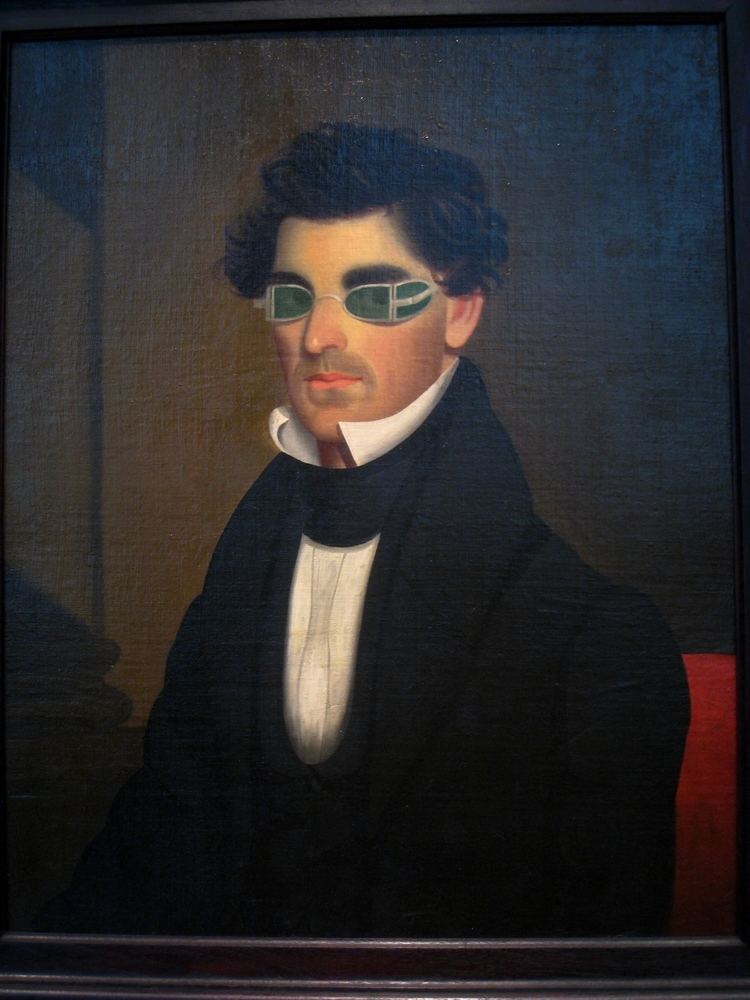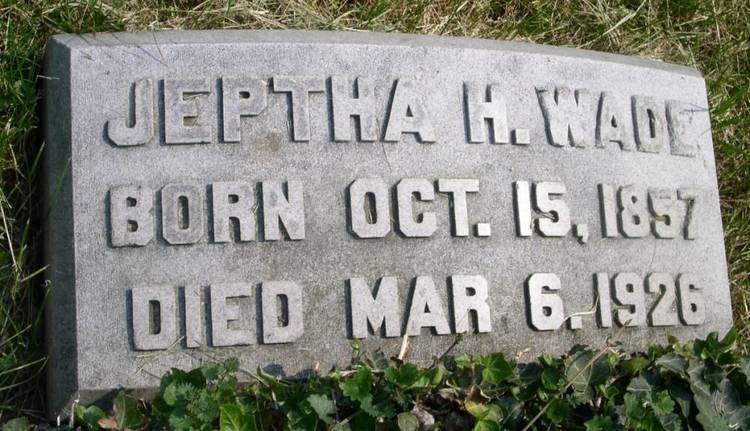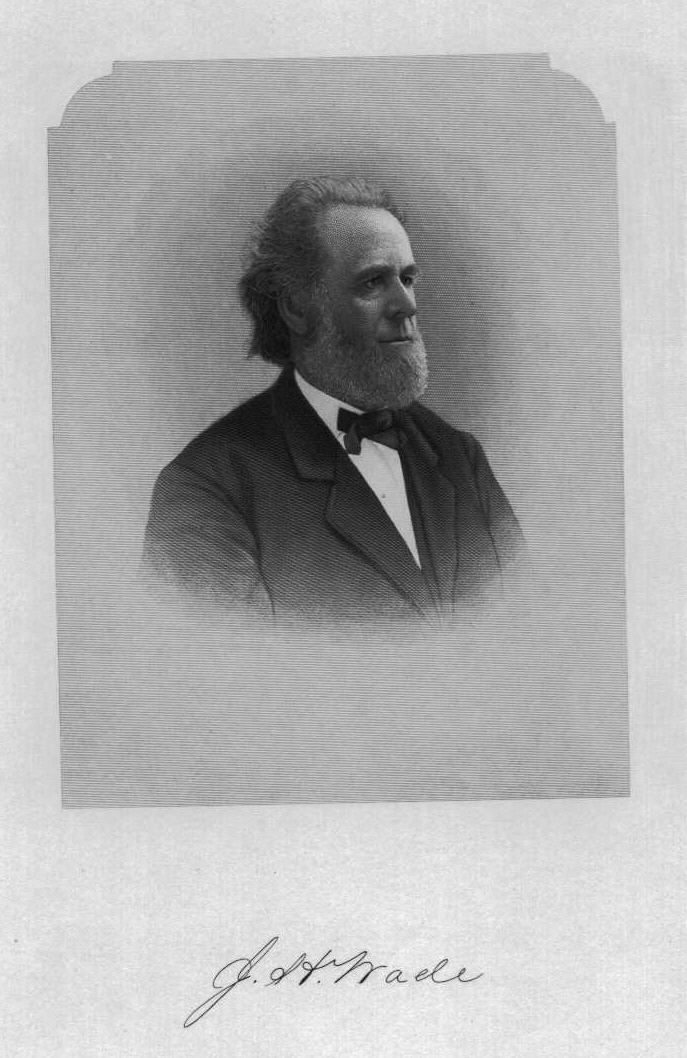Name Jeptha Wade | Production company Western Union | |
 | ||
Similar People Hiram Sibley, Ezra Cornell, Carl Icahn, Brett Icahn | ||
Organizations founded Western Union | ||
Jeptha Homer Wade (August 11, 1811 – August 9, 1890) was an American industrialist, philanthropist, and one of the founding members of Western Union Telegraph. Wade was born in Romulus, New York, the youngest of nine children of Jeptha and Sarah (Allen) Wade. He made the first Daguerreotypes west of New York, was a portrait painter, and moved to Adrian, Michigan in 1840 before developing an interest in the telegraph.
Contents
Biography

In 1847, he was subcontractor for J.J. Speed and constructed a telegraph line from Detroit to Jackson, Michigan, where Wade and his son operated the telegraph office. He also connected Detroit, Michigan to Buffalo, New York Cleveland to Cincinnati (Cleveland and Cincinnati Telegraph Company, the Wade Line), and others.

Wade moved to Cleveland, Ohio in 1856 with his wife and only child, Randall P. Wade (1835-1876). Eventually Randall would supervise the construction of two adjoining mansions with a shared driveway on Euclid Avenue Euclid Avenue, called Millionaires' Row. His grandson, Jeptha H. Wade II (1811-1890) commissioned the Cleveland firm of Hubbell & Benes to design several residences, commercial and public buildings.

In 1856 Jeptha helped Hiram Sibley consolidate most of the telegraph industry by forming Western Union through a series of acquisitions and mergers. In 1861, Jeptha Wade joined forces with Benjamin Franklin Ficklin and Hiram Sibley to form the Pacific Telegraph Company. The company's formation completed the linkage between the east and west coast of the United States by telegraph. Wade became president of Western Union in 1866. A year later he resigned because of ill-health and sold his interests to Jay Gould, and William Orton succeeded to the presidency of Western Union. Jeptha was nominated by the Democratic Party for Representative of Ohio's 18th congressional district in 1864, but lost. He was an incorporator of the Cleveland Rolling Mill Company and the Citizens Savings and Loan Association (becoming its first president), became president of National Bank of Commerce, and served on the board of directors of eight railroads.

Wade used his vast wealth to benefit the city of Cleveland. In 1882, he donated 63 acres (250,000 m2) of land east of the city for the purpose of creating Wade Park, which was named in his honor. Wade Park is Cleveland's cultural center surrounded by the Cleveland Museum of Art, the Cleveland Museum of Natural History, the Western Reserve Historical Society and the Cleveland Botanical Garden.

Wade also was heavily involved with the establishment of Hathaway Brown School, a private academy for young girls and women. He also co-founded the Case School of Applied Technology, which later became part of Case Western Reserve University. In addition, Wade served as the first President of the Board of Trustees for Lake View Cemetery on Cleveland’s east side.
Personal life
Wade married Rebecca Louiza Facer in 1832, who bore his first son, Randall Palmer Wade, later that year. Rebecca Wade died November 30, 1836 at the age of 24. He remarried in 1837 to Susan Maranda Fleming, with whom he adopted 4 more children. All are buried in Lake View Cemetery, Cleveland.
Legacy
Wade's grandchildren included Jeptha Homer Wade II (1857-1926), son of Randall Palmer Wade and Anna Rebecca McGaw Wade. He worked in the banking industry, railway business, mining industry, and manufacturing after graduating from Mt. Pleasant Military Academy in Ossining, New York and Western Reserve University. He owned the USS Wadena (SP-158). He established the family's Mill Pond Plantation in Thomasville, Georgia in 1906 (later divided by the family to include the Arcadia Plantation). He bequeathed to the Cleveland Museum of Natural History a large gem collection that is now part of the Jeptha Homer Wade II Gallery of Gems and Jewels.
A grandchild of Jeptha Homer Wade II was Jeptha Homer Wade III (December 26, 1924 - August 8, 2008), son of George Garretson and Irene Love Wade, who was a prominent Boston attorney assisting in the formation of the federal Arms Control and Disarmament Agency, and served in the American Field Service beginning in 1944. He graduated from Massachusetts Institute of Technology in 1946 and Harvard Law School in 1950. He volunteered as an assistant to retired Secretary of the Army John McCloy in the formation of the Arms Control and Disarmament Agency under the Kennedy Administration before returning to Choate, Hall & Stewart in 1961. He was an advocate for nuclear arms control, president of the Lawyers Alliance for Nuclear Arms Control (later known as LAWS, Lawyers for World Security). He married Emily Vanderbilt, daughter of William Henry Vanderbilt III, who in 2015 added to the family's land holdings in Thomasville, Georgia, by purchasing roughly 4,000 acres (1,600 ha) of the Greenwood Plantation for $22 million. The large tract of old-growth forest will be conserved for research on the ecology of longleaf yellow pine forests.
